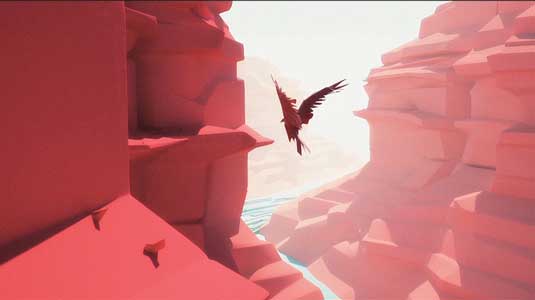Build the perfect showreel: 10 top tips
Make sure studios see your work in the best light. Leading industry figures give their advice on creating a killer showreel.

With studios receiving hundreds of entries a day, getting a career in 3D, animation, motion graphics or movie making is harder than ever. To wangle that dream job, you'll need to create a reel that showcases your talent in a couple of minutes. Read these insiders' tips to ensure your showreel stands out from the crowd...
01. Cut ruthlessly
As head of international outreach at DreamWorks, Shelley Page says: "There's no such thing as a student film that couldn't do with editing." Many student films take on too much, resulting in what one jaded recruiter describes as: "typically five minutes of poor animation on poorly rigged models in poor environments".
"Don’t get attached to material that ultimately doesn’t showcase your best work, even though you have an emotional attachment to it," stresses Patricia Kung, senior recruiter at Animal Logic. Demo reels are about focusing on one's strengths and not trying to be, for example, a character animator if your genius lies in modelling and texturing. Or as Dave Throssell of Fluid Pictures says: "I don't want to wade through a showreel where someone's thrown in everything they've ever done."
02. Keep it short
It’s worth considering showreel duration from a studio’s perspective. They’re likely to receive unsolicited reels on a regular basis, and endure an avalanche every time a position does actually become available. Creating a reel that outstays its welcome is not a good way to gain their attention.
"Because we have to look at so many reels, we would recommend for them to be roughly one-and-a-half to two minutes in length," says Claire Anderson of The Mill. "We don’t even always get all the way through, so I’d also say to put your best work at the beginning."
03. Start and end well
Neil Gallagher, senior lecturer at the University of Hertfordshire, suggests opening with your best work and then, just to ensure you don’t begin with a bang and end with a whimper, close with your second-best piece. Beyond that, if your third-favourite piece does in any way look second-rate, you might want to consider whether it really belongs on the reel at all.
04. Think of it as an ad

If in doubt, try to think of each segment in your showreel as an advert, where the product being sold is you. As Lee Danskin of Escape Studios points out: "Commercials are 30 seconds long for a reason. Too much longer and they get boring."
Get the Creative Bloq Newsletter
Daily design news, reviews, how-tos and more, as picked by the editors.
05. Match your reel to the vacancy/studio
All studios look for different skills, so do your research, and tailor the reel to the position you’re applying for. The reel should show some of the work the company deals with. But don’t throw stuff in just because it’s relevant, be sure that it’s great.
"Some people don’t even know what job they're applying for," says Trond Greve Andersen, co-owner of MIR Visuals, which specialises in architectural visualization. "There’s not much point in a studio like ours looking at models of orcs."
06. Make your role clear
One of the reasons why recruiters don't like student films is that they're usually team efforts, and it's often unclear what the applicant contributed. If there are three characters on screen, is it obvious which one you lit or animated or modelled?
"In the case of group work, it’s important to explain what the student has created," says Neil Gallagher. "Either indicate this in the video when there are group pieces, or provide a breakdown as a PDF or Word document."
07. Show your workings
What you've created speaks for itself to an extent, but people will want to know how you did it too. "Provide a shot breakdown, showing what your contribution was and the software used," says Patricia Kung. "If you’re applying for a technical role, it shows you have a good creative eye too."
08. Keep things simple

It's better to do something that's simple and done well, than going for more complex projects and looking like an amateur.
"You see far too many animators trying to build their own five-minute Avatar, and they end up getting so sidetracked by everything else that the actual animation becomes the last thing they do," says Andrew Daffy of The House of Curves.
"By contrast, I always remember the story of one the guys who became a key animator on [the BBC TV series] Walking with Dinosaurs. His reel was about a minute and-a-half long, and it was a five second sequence that got him hired. All it showed was a stick figure. It was even badly rendered but the body language was so perfectly animated."
09. Technique beats orginality
Demo reels need some flair, but never at the expense of basic skills. "If it's a choice between originality and technical quality, again I'd go for something that was simple and done well," says Throssell.
10. Clichés to avoid
Some CG cliches should be avoided if possible. "If there's one thing that makes my heart sink, it's a demo with spaceships," sighs Joylon Webb, R&D Art Director at Blitz Games Studios Ltd. "They're usually textured cylinders that don't display any modelling skills: you can't see weight, they don't interact with surfaces, they don't display composition, and they're a cliché that has been done for 20 years." Other clichés to avoid in general include dragons, robots, cameras endlessly flying round sets and worlds populated by supermodels and manga heroes.
However, it’s not always the subject matter you pick that matters, but how you choose to treat it in your work. "There’s nothing wrong with
putting a dragon on your showreel, so long as it has an original design or looks like it stepped straight out of a Harry Potter movie," points out Andrew Daffy. "The work can’t look at all corny. It needs to be quite sophisticated, or at least handled really well."
Delivered in conjunction with ZED!
This content was produced in collaboration with HP & Intel as part of ZED - a Pop-Up Studio for the Creative Community held in Soho, London. For more information about ZED and any future events see here.

Thank you for reading 5 articles this month* Join now for unlimited access
Enjoy your first month for just £1 / $1 / €1
*Read 5 free articles per month without a subscription

Join now for unlimited access
Try first month for just £1 / $1 / €1

The Creative Bloq team is made up of a group of art and design enthusiasts, and has changed and evolved since Creative Bloq began back in 2012. The current website team consists of eight full-time members of staff: Editor Georgia Coggan, Deputy Editor Rosie Hilder, Ecommerce Editor Beren Neale, Senior News Editor Daniel Piper, Editor, Digital Art and 3D Ian Dean, Tech Reviews Editor Erlingur Einarsson, Ecommerce Writer Beth Nicholls and Staff Writer Natalie Fear, as well as a roster of freelancers from around the world. The ImagineFX magazine team also pitch in, ensuring that content from leading digital art publication ImagineFX is represented on Creative Bloq.
